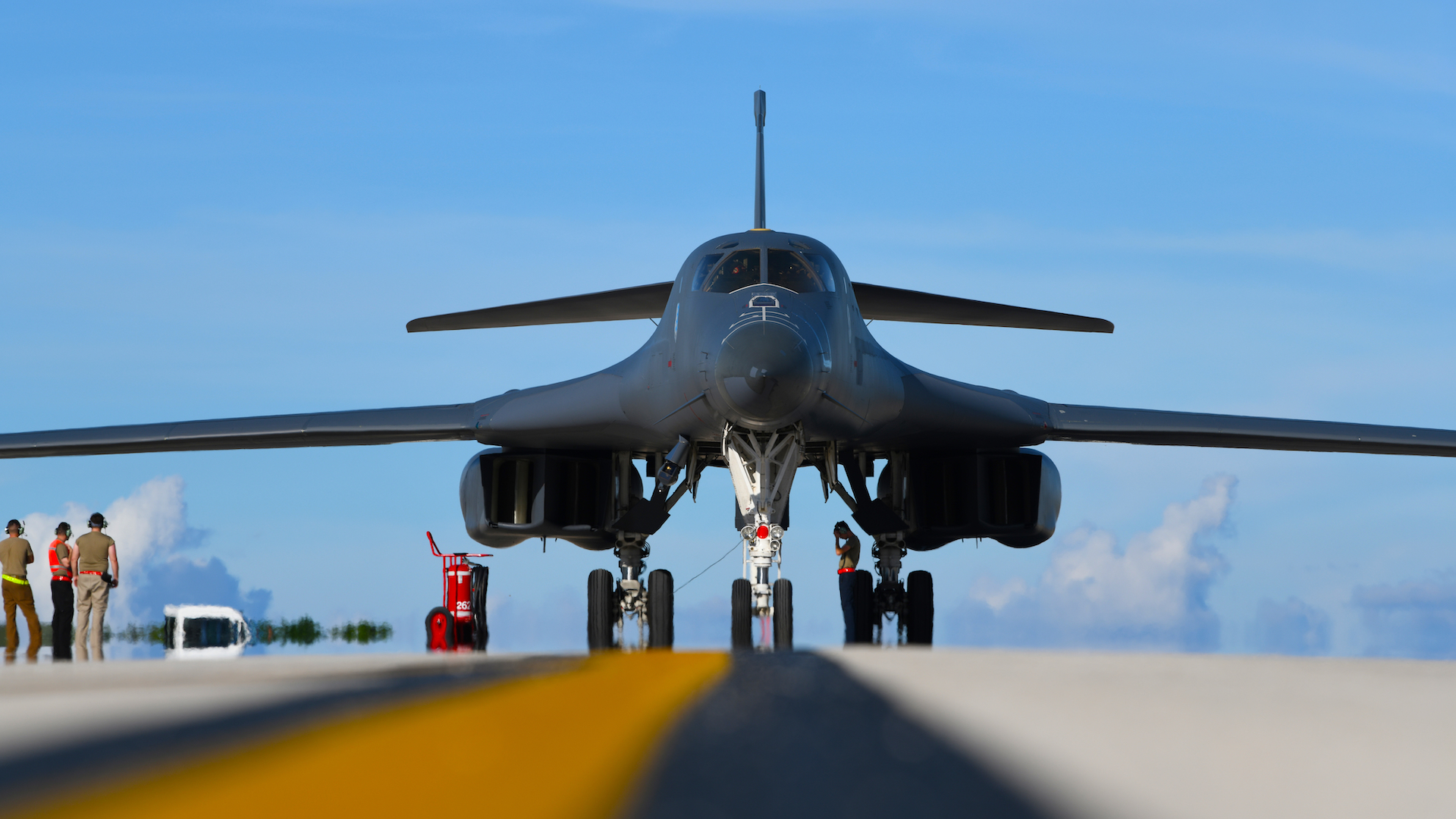

America’s premier long-range heavy bombers are back in Guarm, and they mean business.
Air Force B-1B Lancer bombers from the 28th Bomb Wing at Ellsworth Air Force Base in South Dakota arrived at Andersen Air Force Base in Guam on Thursday as part of a mission with the core goal of “deterring potential adversaries and challenging their decision calculus,” the service announced in a press release.
The arrival of the undisclosed number of Lancers marks the second rotation to Guam this year following a Bomber Task Force (BTF) mission in June that saw four aircraft integrate with Japan Air Self-Defense Force and Royal Australian Air Force for multilateral training operations.
The new rotation will see the Lancers join “with more Allies” for several additional Indo-Pacific training missions to “provide key assurances and cooperation with joint and partner Allies in the region,” as 37th Bomb Squadron operations director Lt. Col. Daniel Mount put it in a statement.
Indeed, the BTF mission to Guam “demonstrates continued U.S. commitment to the Pacific,” said 28th Bomb Wing commander Col. Joseph Sheffield. “Not only does it provide our B-1 aircrew invaluable training opportunities with important Allies and partners, but it also signals our nation’s unwavering support to them.”
Subscribe to Task & Purpose Today. Get the latest military news, entertainment, and gear in your inbox daily.
With a payload capacity of 75,000 pounds and the ability to fly between continents without refueling, the B-1B can carry the largest conventional payload of both guided and unguided weapons in the Air Force inventory, making it “the backbone of America’s long-range bomber force” alongside the B-52 Stratofortress and B-2 Spirit bombers, according to the Air Force.
The show of force the B-1B rotation represents probably couldn’t come soon enough for some allies. Recent weeks have seen renewed regional tensions between the U.S. and China over Taiwan’s sovereignty and an alarming uptick in missile tests from North Korea that suggest a potential nuclear test might be on the horizon for the regime.
Following months of bellicose behavior towards Taiwan — including a ‘simulated attack’ in the Taiwan Strait and launching a ballistic missile over the island nation — Chief of Naval Operations Adm. Mike Gilday on Wednesday indicated that China could possibly invade the U.S. ally as soon as this year.
“When we talk about the 2027 window, in my mind that has to be a 2022 window or a potentially a 2023 window. I can’t rule that out,” Gilday said during an event hosted by the Atlantic Council. “I don’t mean at all to be alarmist by saying that, it’s just that we can’t wish that away.”
In September, President Joe Biden stated unequivocally that the U.S. military would defend Taiwan from a Chinese invasion during an interview with the CBS News show “60 Minutes.”
The escalating Sino-American tensions come amid a flurry of increased military activity from North Korea, which, according to Military Times, has fired the most missiles in a single year since current dictator Kim Jong Un took power more than a decade ago, culminating with the launch of a ballistic missile over Japan in early October.
The Japanese missile scare, the first since 2017, prompted the Defense Department to send the USS Ronald Reagan Carrier Strike Group to the Sea of Japan for trilateral missile defense exercises with a pair of Japanese destroyers and a South Korean destroyer.
“Moving forward, we will continue to consult closely with our allies and partners and stand ready to respond appropriately to any potential future provocative acts by North Korea,” Pentagon Press Secretary Air Force Brig. Gen. Pat Ryder said at the time. “As always, we remain committed to preserving a free and open Indo-Pacific and peace and stability throughout the region.”
When asked on Friday whether the deployment of Lancers to Guam was a “warning” to North Korea, Ryder demurred.
“It’s not uncommon for us to have bomber task forces, which conduct operations around the world … for two reasons,” Ryder said. “One, to send a very clear message that we will support our partners and allies around the world. And two, that we do have the capability to conduct global operations on any given day.”
“So … it is meant to send a message — meant to send a message that the United States stands closely with its allies and partners to deter potential provocation,” he added.
The latest on Task & Purpose
- Orca submarine is yet another case of the Navy spending money like a drunken sailor
- What if the sailor charged in the Bonhomme Richard fire was actually a minor hero?
- Woke Army or Woe Army: What really happened in the social media controversy rocking the force?
- Watch a Ukrainian soldier take out a Russian cruise missile with a MANPADS
- The end of the brown beret: Air Force special ops squadron shuts down after 28 years advising allied aviators
Want to write for Task & Purpose? Click here. Or check out the latest stories on our homepage.